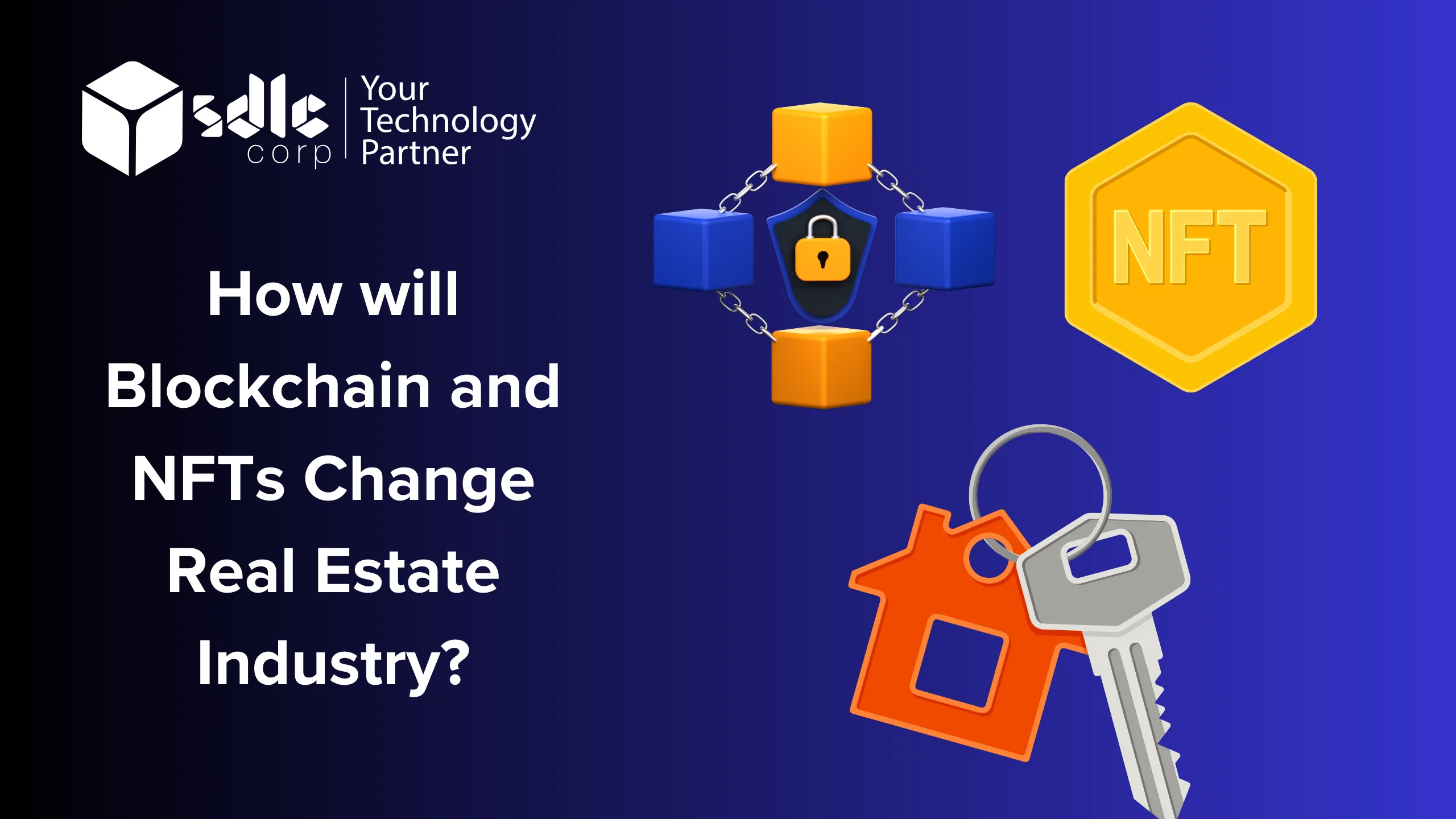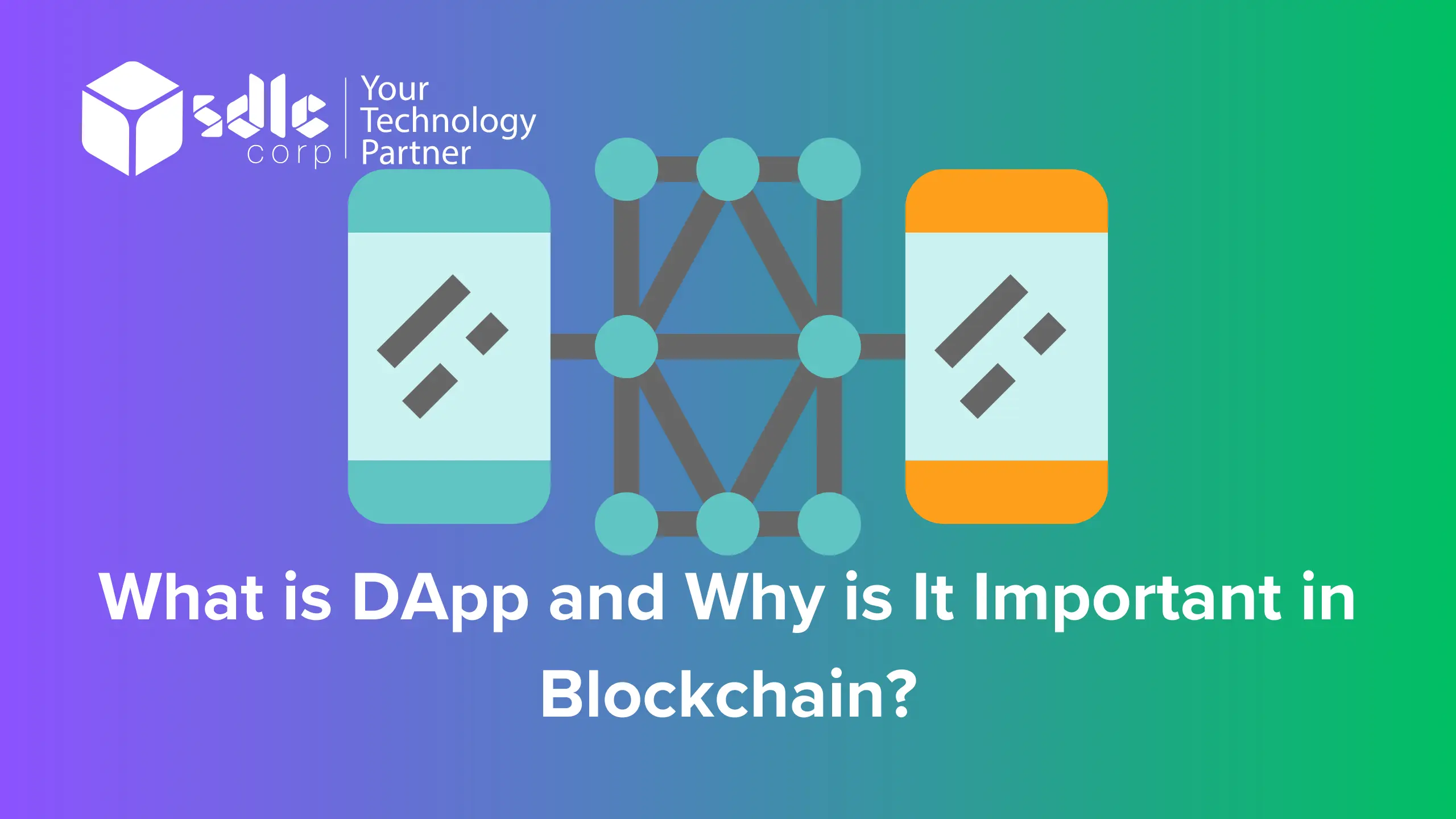What is Dapp Development and why is it Important in Blockchain
What is DApp most asking question? So DApp is Decentralized Applications that operate on a blockchain or peer-to-peer network of computers.
So you’ve heard some incredible things about DApps, but you need help figuring out what they are. Everyone in the world, or at least in the tech world, appears to have a different definition, and the deeper you delve, the more befuddling technical it all becomes.
You might even be eager to create a DApp and participate in the decentralized community, but you need to figure out why they’re better than regular apps.
We have some responses that will provide clear, actionable information in plain language.
What is A Decentralized Application (Dapp)?
To get right to it, a decentralized app, or DApp for short, is somehow an online application linked to the blockchain. This could mean that all the back-end storage is done on a blockchain instead of a server.
Still, in practice, it usually involves just a tiny component of the app connecting to the blockchain via a simple API. DApps are used in the most practical ways, the same as any other software application. They can be based on a website or a mobile app.
So, what distinguishes them from other apps
- Decentralized: Some activity and data in a DApp are routed through a distributed network of machines/nodes, such as a blockchain network, rather than a centralized server.
- Unkillable: If a significant portion of a DApp’s data is stored on a blockchain, it eliminates the possibility of a single, central point of failure.
What is Dapp Development and why is it Important in Blockchain

Explore our other insights!

How will Blockchain and NFTs Change Real Estate Industry?
Blockchain and NFTs in Real Estate Industry: The most valuable asset class in the world is comprised of

Crypto All-Stars ICO Hits $5 Million Benchmark as Demand Grows
The cryptocurrency market thrives on dynamism. Projects rise and fall, yet every so often, one emerges that captures

Overcoming P2P Lending Challenges: Key Insights for Success
Introduction Peer-to-peer (P2P) lending has reshaped the financial industry, offering an innovative alternative to traditional banking by connecting
Extras That are Frequently Associated with DApps
Open-Source:
While it is not required to open-source your code to create a DApp, it is common practice. We strongly suggest it if you want your app’s users to be able to see everything and trust it.
Data Ownership:
Many DApps, or DApp creators, do not own their users’ data. Instead, users can hold their data, which they can then share with other DApps or remove entirely from the ecosystem.
Tokens:
Many DApps make use of some form of receipt. Again, this isn’t required, but it can be handy for rewarding your community, and it’s also reasonably simple to do with a DApp.
DApps run on blockchains, which makes it easy for them to quickly offer a valuable asset, like tokens, that can be used as cash and allow applications that need the exchange of value.
Traditional applications must create bank or card transactions and keep your money in their wallets. DApps, on the other hand, allow users to keep their cash/rewards in their wallets.
At this point, there’s still some disagreement about what constitutes a DApp in the purest sense. Some people insist that there must always be a token involved, while others are very concerned with the open-source nature, but the critical point is that DApps are built on a decentralized network.
So, what exactly distinguishes a DApp from other types of apps? To understand what makes DApps unique, we must first examine how traditional (slightly boring?) centralized apps function.
How do Centralized Applications Work?
Okay, we’re going super basic here, so please excuse any broad generalizations. However, the majority of traditional apps have three main functions:
The front end of an application is the part of the app that the user sees and uses to interact with the program.
- Server: Front-end requests are routed to a centralized server.
- Database: Data from front-end user actions (acquired via server requests) are collected and stored on a centralized database owned by a single company or individual.
It should be noted that while servers and databases may be distributed across multiple data centers or a cloud service provider, they are ultimately controlled by a single organization.
This method of developing usable applications has been and continues to be highly effective in getting your service up and running. Centralization allows for low-cost hosting, fast running speeds, simple development, and a tightly controlled user experience.
However, these benefits come at a high price. The first is delegating significant control to large hosting companies, such as the helpful folks at Google or Amazon. Furthermore, a centralized database is an enticing target for hackers.
You can only hope that the big brothers’ security is up to par, but let’s face it: cybercrime will only become more prevalent and cybersecurity more dangerous.
And your users must accept, even if they don’t know it or don’t want to, that someone else owns their personal and private information. Usually, this is the highest bidder.
DApps provide an alternative to solve these issues while incorporating some social justice.
Navigate the Difference: Binance vs. Binance Smart Chain - Dive In!

How Do Dapps Work?
I’m glad you asked. Let’s assume the entire DApp runs on the blockchain to keep things simple. This means that, similar to centralized apps, DApps functionality can be divided into three primary stages:
The interface is the same as in a centralized app.
Smart Contracts
For now, smart contracts are the DApp’s blockchain network interface. They have an essay. In this example, the front end interacts with the smart contract via API (in reality, this happens via a blockchain wallet and gets a bit more complicated).
Blockchain Network
The smart contract’s code then chooses and stores data on the decentralized blockchain network. Data is stored on behalf of the user within the DApp system to allow proper functionality of the app and all its transactions.
The Bottom Layer
The blockchain network on which the entire system runs – makes the DApp unique. Unlike a centralized database, owned and controlled by a single person (or a multinational conglomerate), the blockchain network is completely decentralized, which means it is run and seen by all users in the ecosystem.
It’s formally known as a peer-to-peer system. Every request from the app’s front end is routed through every person (node) on the network. Then, they execute the smart contract code and save the resulting blockchain data on their ledger copy.
So, everyone knows about every transaction that has ever happened on the DApp. This makes the data extremely difficult to tamper with while allowing for maximum visibility and community ownership of data. Isn’t it mind-boggling?
The Advantages of Decentralized Applications
Decentralized applications offer the following advantages:
Tolerance for Faults
A decentralized network can remain operational if a single node is still operational, though performance may suffer significantly. Since there is no central network, a hacker is unlikely to attack a large enough network of nodes to bring down a decentralized app.
Data Consistency
Because blockchain consensus algorithms ensure that data stored in the blockchain is resistant to change, The data on a blockchain can’t be changed and is safe.
An Adaptable Platform
The Ethereum blockchain is flexible enough to allow for the rapid development of dApps for various industries.
User Confidentiality
Users are not required to provide personal information to dApps to use any app-specific functionality.

The Disadvantages of Decentralized Applications
Maintenance
DApps are challenging to maintain, debug, and update because all fixes necessitate the agreement of all peers in the blockchain-based network. It takes work to scale. Scaling decentralized networks is more complex than scaling centralized networks. Congestion on the network. The entire network will be backed up if a dApp consumes too many resources.
User Encounter
Because dApps function differently than centralized apps, developers may need help to create a user-friendly experience for end users. For example, users must use a public and private key rather than a username and password to log in.
Do You Believe a Dapp is Right for You?
DApps may be a daunting new skill set, but with the right tools, adding a pinch of blockchain to your app is not only simple but also extremely rewarding.
SDLC has created a method for building on our chain that allows DApp developers to get started quickly without learning new programming languages or smart contract development.
To create a DApp using SDLC, follow these steps:
Create a front end in your preferred framework, as long as it is JavaScript-compatible.
Use the SDLC (JavaScript) API to interact with SDLC MainNet.
Use our extensive development resources to get started on your DApp.















